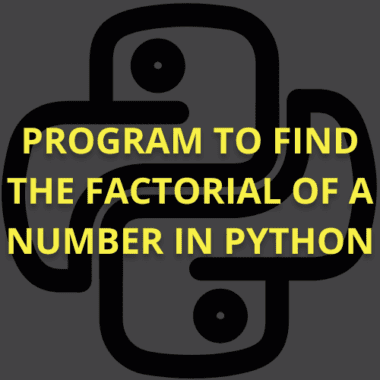Summary: Python makes data science easy, powerful, and accessible. Its clean syntax, strong community, and rich libraries support tasks from data cleaning to AI. Ideal for beginners and pros alike, Python is the go-to language for anyone looking to dive into the exciting world of data science.
Introduction
We live in a world full of data. Every swipe on your phone, online purchase, and weather report is all data, data, and more. But what good is all this information if we can’t understand it?
This is where data science comes into the picture. It is the magical process of turning messy numbers into smart decisions, cool predictions, and amazing insights. And if data science is the magic, then Python is the wand that makes it all happen.
But why do so many people, from beginners to pros, love Python for data science? Is it the friendly code? The helpful tools? The massive community of fellow coders?
Let’s break it down into simple, bite-sized pieces.
Key Takeaways
- Python reads like English, making it beginner-friendly and less intimidating for non-coders.
- It has powerful libraries like Pandas, NumPy, and Matplotlib for every data science task.
- Python’s vast community offers endless tutorials, help, and support for learners.
- It’s highly versatile and used in data science and web, AI, and automation.
- Python runs everywhere — Windows, Mac, or Linux — making collaboration seamless and hassle-free.
Python Feels Like English
Ever seen a programming language that looks like a robot wrote it for another robot? Luckily, Python isn’t like that at all.
Python code reads almost like regular English. It doesn’t confuse you with weird symbols or complicated rules. For example, to show something on the screen, all you write is:
That’s it! No curly brackets, no semi-colons dancing around. Python speaks your language — and that’s why it’s loved by people just getting started in coding and data science.
Easy-Peasy to Learn
Python is often called “beginner-friendly” and truly lives up to the name. Whether you’re a student, a working professional switching careers, or just curious about data science, Python welcomes you with open arms.
Here’s why beginners adore it:
- Clean and simple syntax (that’s a fancy word for code structure)
- Less code, more action — Python lets you do a lot with just a few lines
- You spend more time learning data science and less time pulling your hair out over code errors.
In short: Python doesn’t scare you. It teaches you.
Many Libraries
Python has many ready-to-use tools (called libraries) that make data science a breeze.
Let’s meet a few of them:
- NumPy: It handles numbers and math like a pro.
- Pandas: The spreadsheet genius. It helps you clean, sort, and play around with rows and columns of data.
- SciPy: For all things science-y: stats, signals, and simulations.
- Matplotlib & Seaborn: Want to draw cool graphs and charts? These two have your back.
With these tools, Python becomes a Swiss Army knife for anyone working with data.
The Python Crowd: Big, Helpful, and Friendly
Learning something new is way easier when you’ve got people around who’ve been there, done that, and are happy to help. That’s the magic of the Python community.
With Python being one of the most popular languages in the world:
- You get tons of tutorials, how-to videos, and guides online
- You can ask questions in forums like Stack Overflow or Reddit, and get answers fast
- You can join coding groups or local meetups and find mentors or collaborators.
Basically, you’re never alone on your Python journey.
More Than Just Data Science: Python’s Superpower of Versatility
Python isn’t a one-trick pony. It’s more like a unicorn 🦄.
Yes, it’s amazing for data science. But it can also do a lot more:
- Build websites
- Automate boring tasks (like renaming 1000 files)
- Create games or apps
- Work with Artificial Intelligence (AI) and Machine Learning
This makes Python a great long-term investment. Once you learn it, the possibilities are endless.
It Works Everywhere
Imagine writing a code on your Windows computer and sharing it with a friend who uses a Mac — and it works perfectly. That’s the beauty of Python’s cross-platform power.
Python runs smoothly on:
- Windows
- macOS
- Linux
So if you collaborate with teammates or share your data science projects, there are no messy tech hiccups. Python plays nice with everyone.
Real-World Magic: Python in Action
Still wondering what Python can actually do? Here are some cool real-world things powered by Python in data science:
- Spotify uses it to recommend your next favourite song
- NASA uses it for scientific calculations (yes, space stuff!)
- Banks use it to detect fraud and predict risks
- Doctors and researchers use it to study diseases and treatments
Python is working quietly in the background from your phone to outer space.
Final Thoughts: Why Python Deserves the Hype
Let’s be honest. There’s a reason why everyone in data science swears by Python — it makes life easier.
It’s simple. It’s powerful. It has an army of tools and a community of helpers. Whether you’re building models, cleaning messy data, or drawing stunning charts, Python has your back.
So if you’re curious about data science and wondering where to start, don’t overthink it. Pick up Python. Play with it. And soon enough, you’ll see why the whole world loves it.
If you’re ready to dive deeper, consider joining hands-on data science courses by Pickl.AI. These beginner-friendly courses help you master Python for real-world data problems. Learn the right skills, build projects, and transform your curiosity into a successful data science career with Python leading the way.
Frequently Asked Questions
Why is the Python language preferred for data science?
Python is popular in data science because of its easy syntax, vast libraries, and flexibility. It supports tasks like data analysis, visualization, and machine learning. Its readability and huge community make it ideal for both beginners and professionals looking to solve complex data problems efficiently.
Can beginners use Python for learning data science?
Yes! Python is beginner-friendly and perfect for starting a data science journey. Its clear syntax and helpful libraries allow learners to focus more on concepts and less on coding issues. With tons of tutorials and community support, Python simplifies learning for anyone stepping into data science.
What Python libraries are essential for data science?
Key Python libraries include Pandas for data handling, NumPy for numerical operations, Matplotlib and Seaborn for data visualization, and SciPy for scientific computing. These libraries provide ready-to-use tools, helping data scientists work faster and smarter across various types of data analysis.




